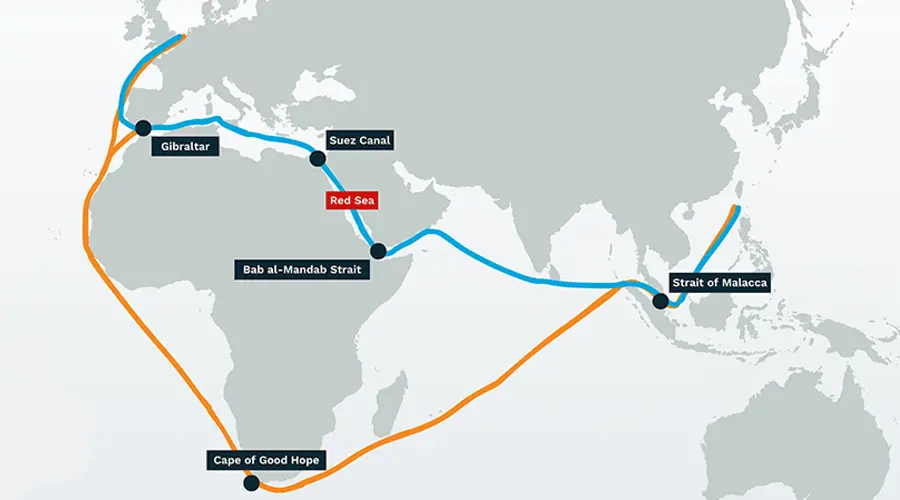“The increased emissions are a result of vessels being rerouted because of the attacks by Yemen’s Houthis on commercial ships in the Red Sea and Gulf of Aden,” the Financial Times reports. Most shipping companies have been sending their cargoes around the Cape of Good Hope in South Africa since November, rather than cutting through the Suez Canal, “which at normal speeds adds between 10 days and two weeks to a container ship’s voyage from Asia to Europe.”
To make up the difference, shipping giants like Møller-Maersk and Hapag-Lloyd have had to suspend a decade-long policy of “slow-steaming”, meant to increase fuel economy and drive down emissions. Brussels-based Transport & Environment says a 10% reduction in a ship’s speed can reduce emissions 27%—or by a net 19%, after accounting for the additional container ships, car carriers, and dry bulk ships that would have to be brought on to make up for the lost capacity.
The Houthi attacks have shippers “caught between a rock and a hard place,” said Alan Murphy, CEO of the Sea-Intelligence marine data and analysis firm.
“If they want to move their cargo, they will have to accept a significant increase in their carbon emissions,” he added. “They can to some degree mitigate this, by being conscious about which vessels they book their cargo on, but in practice this cannot always be done.”
The only alternative, Murphy added, is for customers to ship less. “This will ensure they do not increase their emissions, but the downside is of course that this jeopardizes their core business, as their goods will not make it to the store shelves.”
Which means the Houthi action will drive up climate pollution one way or another—by putting more ships on the ocean at slower speed, or increasing emissions as the existing fleet increases speed. Booking the same cargo on the same vessel would drive up emissions by 50% from Asia to Northern Europe and 89% to the Mediterranean for a given volume of goods, Lloyd’s List writes, while switching to a smaller ship could produce an increase of up to 575%.

Alternate shipping route via Cape of Good Hope
Source
Image attribution Tags: Houthi Attacks Shut Red Sea Route, Møller-Maersk and Hapag-Lloyd, Shipping Emissions, significant increase in their carbon emissions


